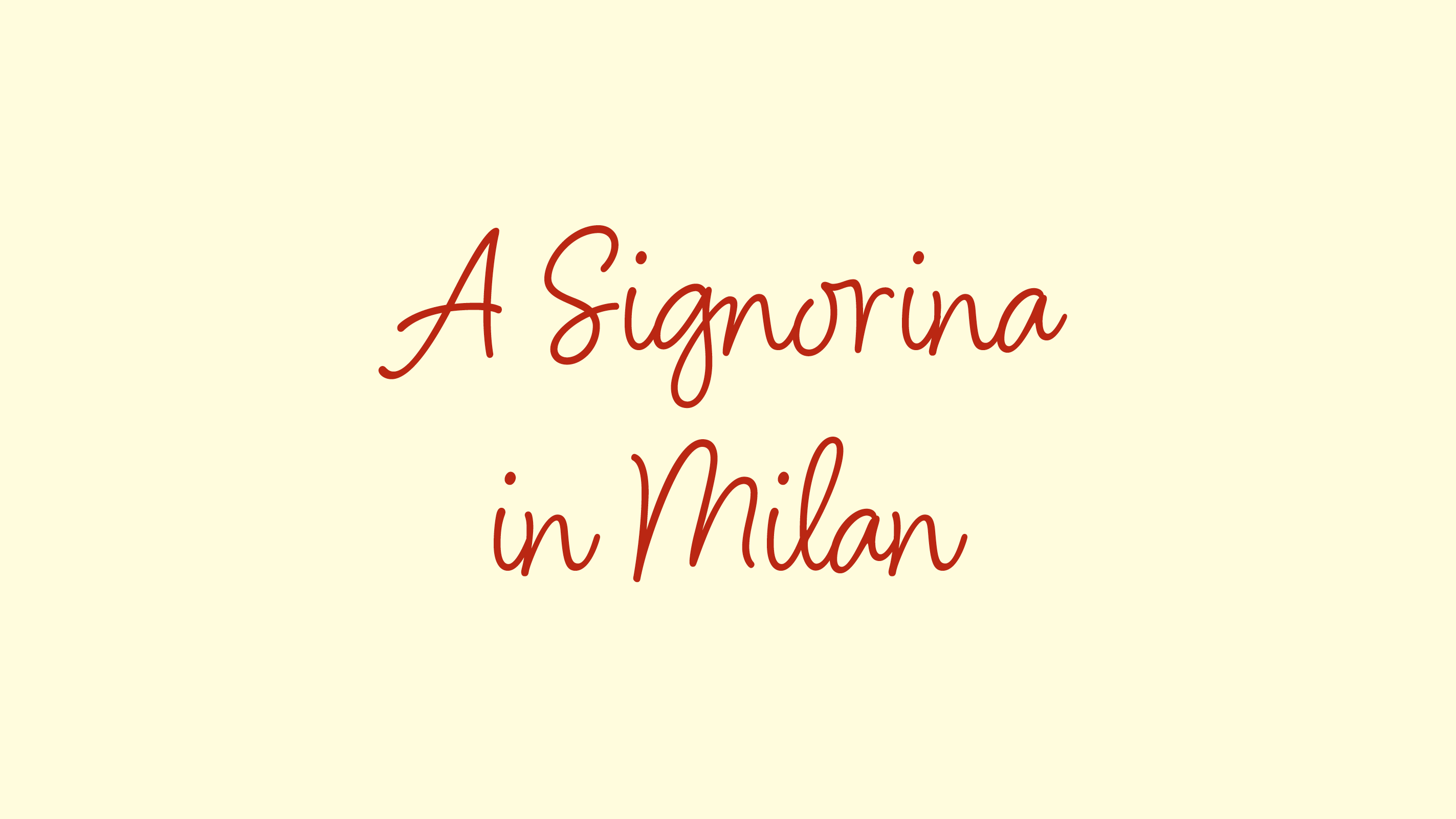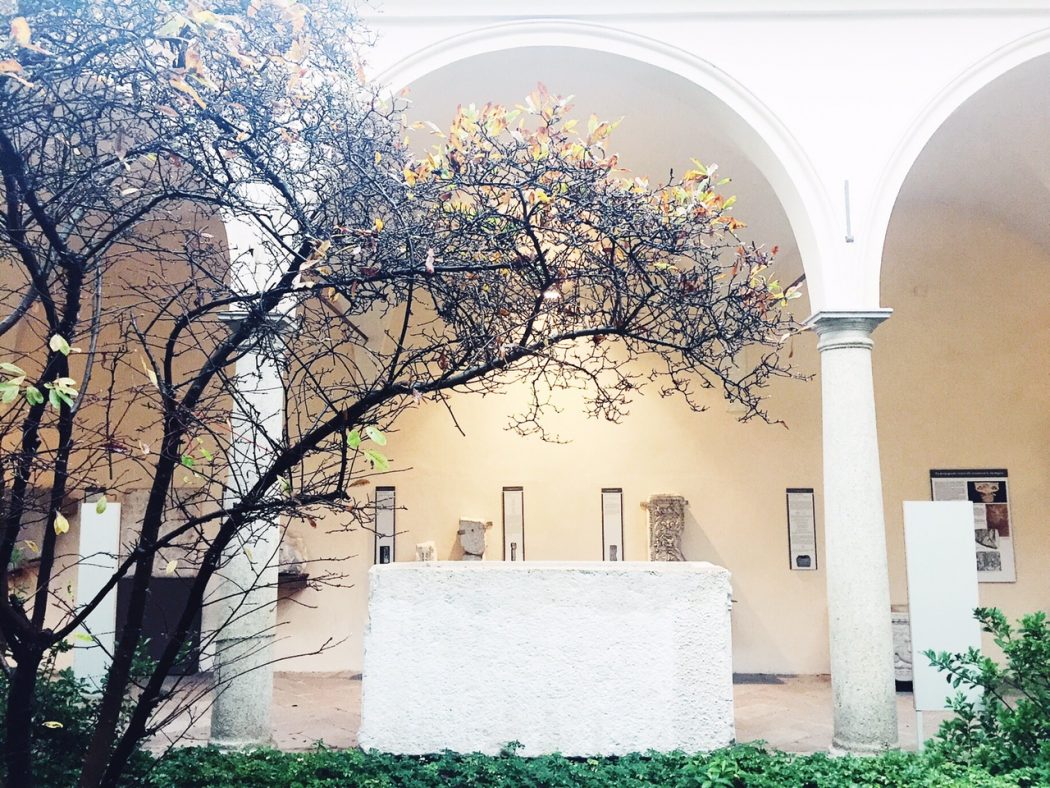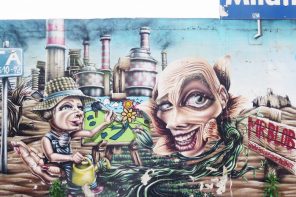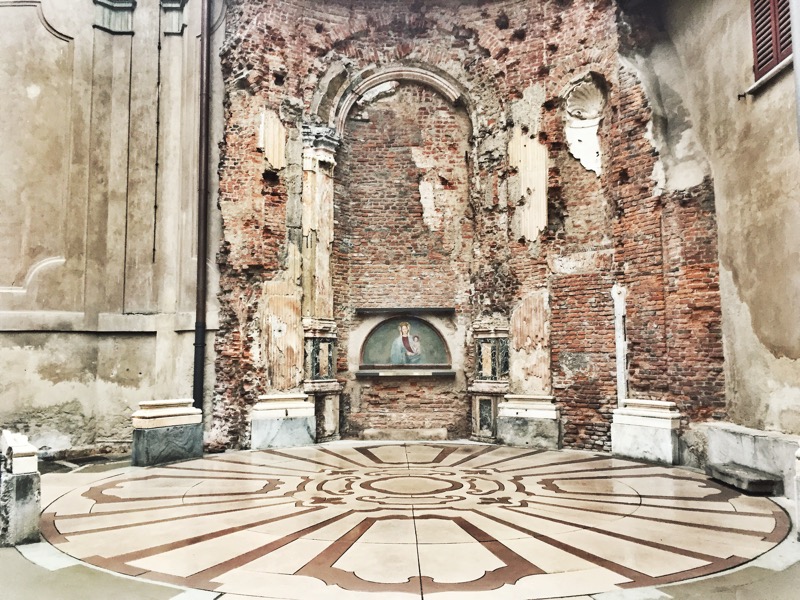I have to say that I’m beyond mortified that it took me two-and-a-half years to get to the Archaeological Museum of Milan (Civico Museo Archelogico), but all things considered, I guess it’s better late than never.
I always say in my next life, I want to be an archaeologist (and if I had known then what I know now, it’s probably the career path I would have chosen), as I just love the bejusus out of old things and can spend hours pondering the past. So anyway, the Archaeological Museum is one of the coolest things in Milan and all I want to do is brush up on Mediolanum (Ancient Milan) knowledge. Here’s what I loved about the museum.
- So, the museum is located over the old Roman City walls, part of which are still standing. During a visit, you even get to visit the top of Polygonal Tower, which today stands 16.6 meters but it once stood 18. Twenty four sides on the outside but circular inside, It’s wild to imagine how this tower once offered a sweeping view of both the city and its exteriors and now, those beautiful Milanese buildings obstruct the former view. But it’s certainly something. Inside, are 13th century religious frescos from when it was incorprated into San Maurizio al Monastero Maggiore as a place of prayer. Today, against the backdrop of what remains of the frescos, “Dormiente” (sleeping), an artwork from contemporary artist Mimmo Paladino, is on display.

- There’s a model of Roman Milan that is just amazing to observe. Today’s street names are included for context (i.e. Corso Garibaldi), and all I could imagine was how this city once looked. Milan retains little of its very old things so I really couldn’t stop looking at it. I also couldn’t believe was how small Roman Milan was! It only had about 20,000 inhabitants and therefore very small urban centers compared to other more populated Roman cities. Fun fact: Via Nerone, where stands the museum’s inner cloisters, used to be a waterway that also helped protect the city inside the walls.

- The inner building’s three levels are divided up as follows: Early Middle Ages, Etruscan and Greek. Go and get lost in the lives of these three eras, and notice the major similarities and differences. The Early Middle Ages sections includes replicas of 4 diseases that effected locals during that era: Gout, tuberculosis, rheumatoid arthritis and syphilis. The Greek level features replicas made from exhumed skeletons: a pregnant woman; a 40 – 45 year old man who consumed a wine diet and had cranial trauma and knee arthritis; a 25 – 35 year old man who died of a spinal fracture, as well as a section dedicated entirely to all the different Greek vase/urns and their purposes. The Etruscans cherished the act of sitting aroudn a table and sharing a meal, as seen by a selection of tableware and plateware from their times.
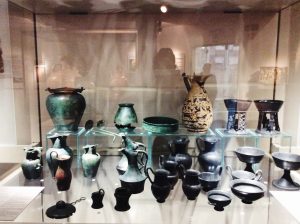
Etruscan tableware
- There’s a special room dedicated to the Caesarea Maritima archaeological site in Israel, and one of the coolest things in here is a replica of the Pilate Stone, a damaged piece of limestone dating back to sometime between 26 and 36 A.D. that has Pontius Pilate’s name mentioned on it, the (in) famous prefect of Judea.

- The Trivulzio Diatreta Cup, a fourth-century object that is believed to have been created in Germany, it’s one of the best remaining examples of a Greek Diatretos, an open work made of glass and blown into a mould. It sits enclosed in glass against the backdrop of an ancient mosaic floor.

- The subterranean exhibit features life in Mediolanum, with mannequins draped in Roman garb and standing on a first-century Mosaic floor. You’ll also find various objects, ceramics and items pertaining to daily life and dwellings, all beside subterranean parts of the original Roman edifice.
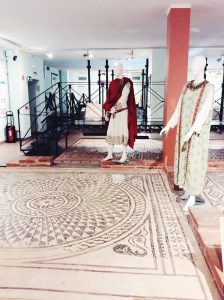
Archaeological Museum of Milan; Corso Magenta 15; +39 02 8846 5720; Tuesday – Sunday, 9am – 5.30pm; closed Monday; website
